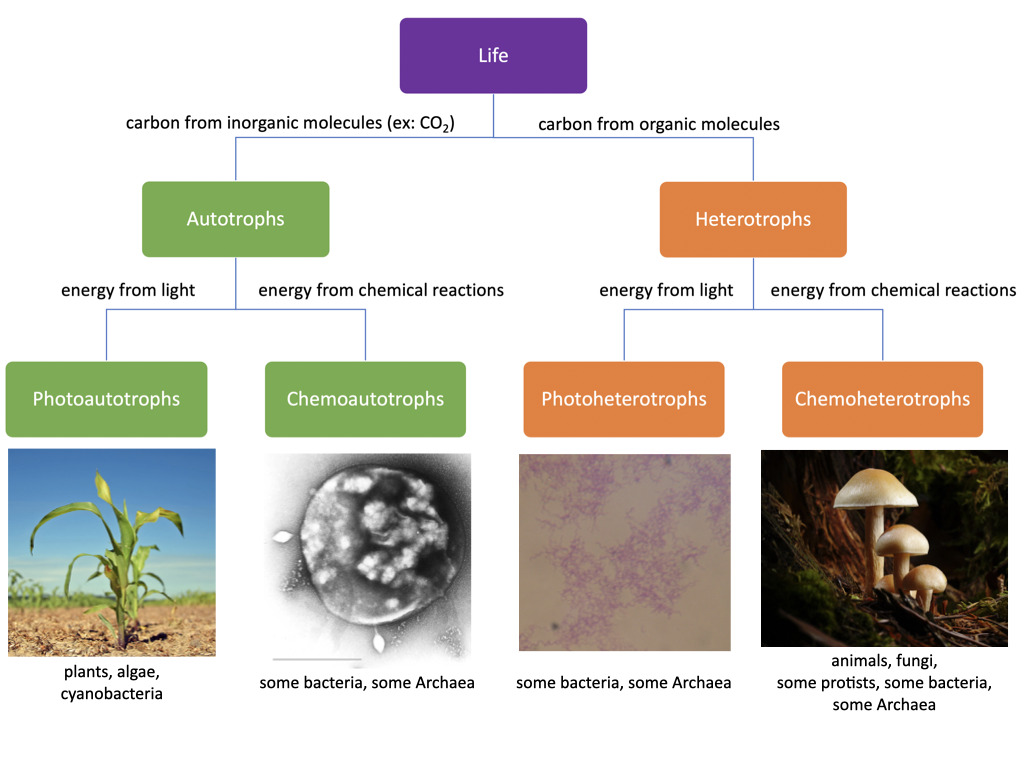21.1 Metabolism
Virtually every task performed by living organisms requires energy. Organisms require energy to perform heavy labor and exercise, but humans also use considerable energy while thinking, and even during sleep. Every organism’s living cells constantly use energy. Organisms must import nutrients and other molecules. They need to constantly synthesize new molecules, such as proteins. Additionally, signaling molecules such as hormones and neurotransmitters need to be transported between cells. Some cells ingest and break down bacteria and viruses. Cells must also export waste and toxins to stay healthy, and many cells must swim or move surrounding materials via the beating motion of cellular appendages like cilia and flagella. All of these processes require energy.
Organisms and Metabolism
Organisms can be classified by how they obtain their energy and their carbon. A source of carbon is, of course, critical to building the biomolecules that compose life. Some organisms obtain carbon from inorganic sources, such as carbon dioxide. We classify these organisms as autotrophs. We are most familiar with photoautotrophs, which include plants, algae (which are protists), and some bacteria. Heterotrophs obtain carbon from organic molecules that have been produced by autotrophs. These include animals, fungi, most bacteria, and many protists.

Ultimately, the source of energy that sustains the vast majority of organisms is light from the sun. Photoautotrophs such as plants, algae, and some bacteria are able to use energy from the sun to produce organic molecules from inorganic carbon dioxide during photosynthesis. This provides the organic molecules that chemoheterotrophs, such as animals and fungi, depend upon to maintain life.
Metabolic Reactions
All of the chemical reactions that take place inside cells, including those that use and release energy, are the cell’s metabolism. As discussed earlier, metabolism includes anabolic and catabolic pathways. We will now consider how this relates to energy.

an organism that obtains carbon from inorganic molecules, such as carbon dioxide
an organism that obtains its carbon from organic molecules
process of converting light energy into chemical energy
reaction or pathway that requires an input of energy to synthesize complex molecules from simpler molecules
reaction or pathway in which complex molecules are broken down into simpler ones, releasing energy

